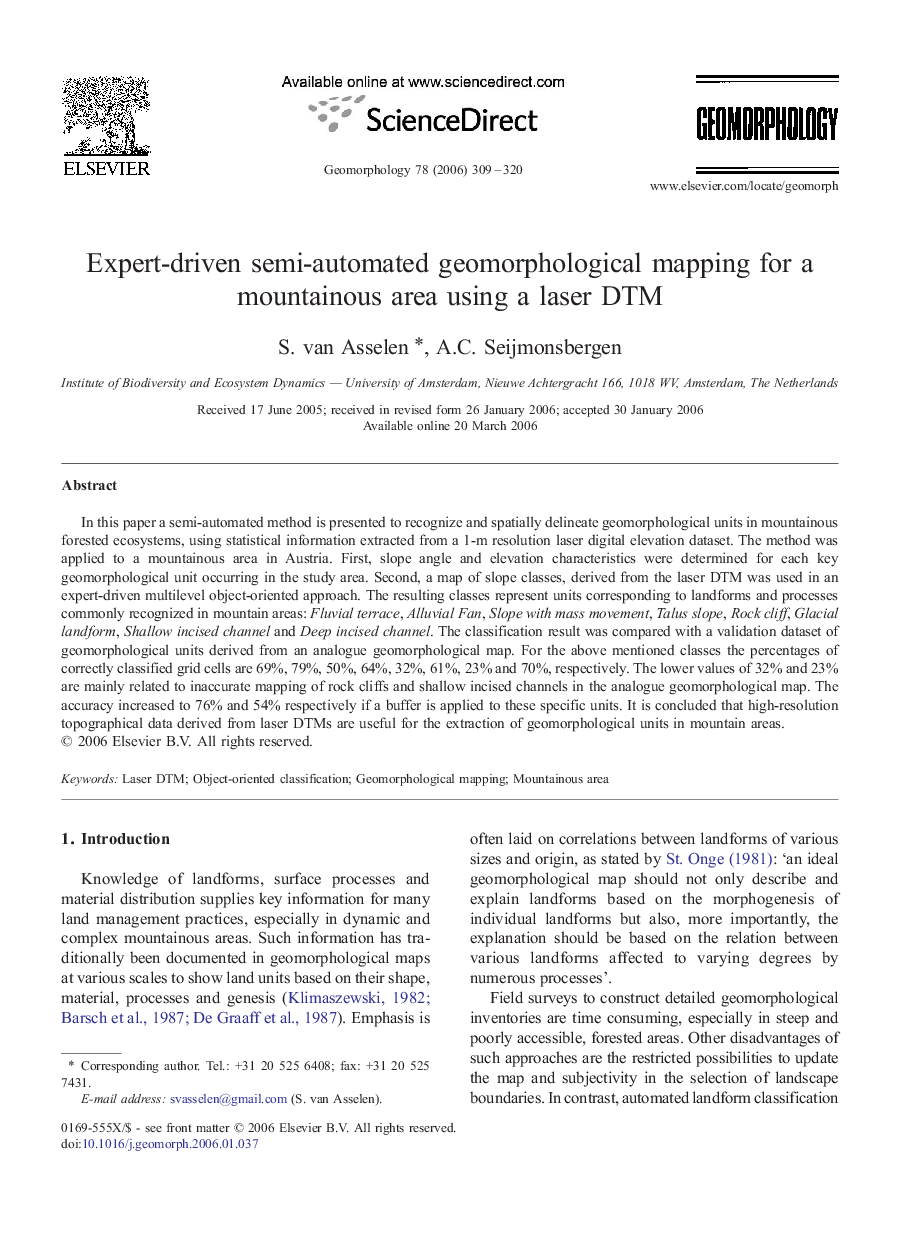| Article ID | Journal | Published Year | Pages | File Type |
|---|---|---|---|---|
| 4687556 | Geomorphology | 2006 | 12 Pages |
In this paper a semi-automated method is presented to recognize and spatially delineate geomorphological units in mountainous forested ecosystems, using statistical information extracted from a 1-m resolution laser digital elevation dataset. The method was applied to a mountainous area in Austria. First, slope angle and elevation characteristics were determined for each key geomorphological unit occurring in the study area. Second, a map of slope classes, derived from the laser DTM was used in an expert-driven multilevel object-oriented approach. The resulting classes represent units corresponding to landforms and processes commonly recognized in mountain areas: Fluvial terrace, Alluvial Fan, Slope with mass movement, Talus slope, Rock cliff, Glacial landform, Shallow incised channel and Deep incised channel. The classification result was compared with a validation dataset of geomorphological units derived from an analogue geomorphological map. For the above mentioned classes the percentages of correctly classified grid cells are 69%, 79%, 50%, 64%, 32%, 61%, 23% and 70%, respectively. The lower values of 32% and 23% are mainly related to inaccurate mapping of rock cliffs and shallow incised channels in the analogue geomorphological map. The accuracy increased to 76% and 54% respectively if a buffer is applied to these specific units. It is concluded that high-resolution topographical data derived from laser DTMs are useful for the extraction of geomorphological units in mountain areas.
